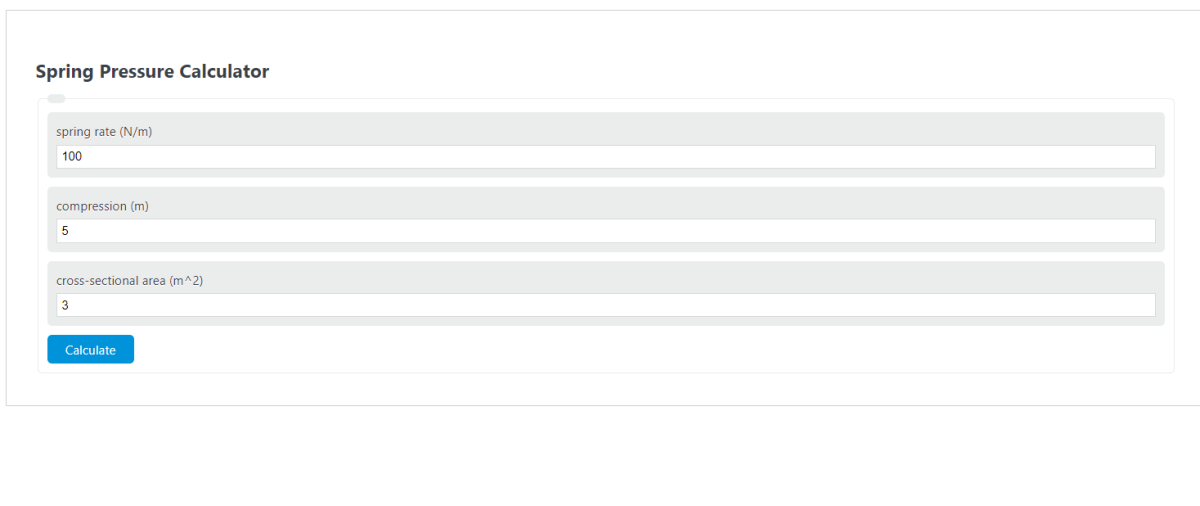Enter the spring rate (N/m), the compression (m), and the cross-sectional area (m^2) into the calculator to determine the Spring Pressure.
- All Pressure Calculators
- Valve Spring Pressure Calculator
- Spring Work Calculator
- Bearing Pressure Calculator
- Leaf Spring Rate Calculator
Spring Pressure Formula
The following formula is used to calculate the Spring Pressure.
Pspring = K * X / A
- Where Pspring is the Spring Pressure (Pa)
- K is the spring rate (N/m)
- X is the compression (m)
- A is the cross-sectional area (m^2)
To calculate the spring pressure, multiply the spring rate by the compression, then divide by the cross-sectional area.
How to Calculate Spring Pressure?
The following example problems outline how to calculate the Spring Pressure.
Example Problem #1
- First, determine the spring rate (N/m). In this example, the spring rate (N/m) is given as 100 .
- Next, determine the compression (m). For this problem, the compression (m) is given as .5 .
- Next, determine the cross-sectional area (m^2). In this case, the cross-sectional area (m^2) is found to be .75.
- Finally, calculate the Spring Pressure using the formula above:
Pspring = K * X / A
Inserting the values from above and solving yields:
Pspring = 100 * .5 / .75 = 66.66 (Pa)
Example Problem #2
Using the same method as above, determine the variables required by the equation. For this example problem, these are provided as:
spring rate (N/m) = 500
compression (m) = 3
cross-sectional area (m^2) = 5
Enter these given values yields:
Pspring = 500 * 3 / 5 = 300 (Pa)
